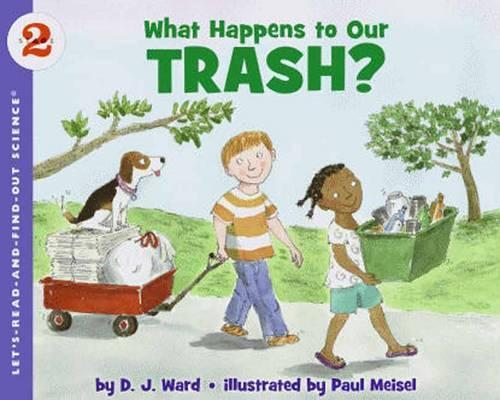
What Happens to Our Trash
(Paperback)
Publishing Details
What Happens to Our Trash
By (Author) Dj Ward
By (author) Paul Meisel
HarperCollins Publishers Inc
HarperCollins
1st April 2012
United States
Classifications
Children
Non Fiction
Childrens / Teenage social topics: Environment, sustainability and green issues
363.728
Physical Properties
Paperback
40
Width 255mm, Height 202mm, Spine 3mm
154g
Description
Read and find out about how we can reduce, reuse, and recycle in this colorfully illustrated nonfiction picture book.
"Perfect for classes just beginning to study environmental concerns," wrote School Library Journal. "Engaging prose and upbeat, gently humorous illustrations introduce the importance of proper trash disposal and recycling."
This is a clear and appealing science book for early elementary age kids, both at home and in the classroom. In clear language and art, including diagrams, the book takes readers through such details as how much trash each person creates every day (on average), where the trash goes, and ways kids can make a difference. It concludes with instructions on how to create a compost pile
What Happens to Our Trash is a Level 2 Let's-Read-and-Find-Out, which means the book explores more challenging concepts for children in the primary grades. The 100+ titles in this leading nonfiction series are:
- hands-on and visual
- acclaimed and trusted
- great for classrooms
Top 10 reasons to love LRFOs:
- Entertain and educate at the same time
- Have appealing, child-centered topics
- Developmentally appropriate for emerging readers
- Focused; answering questions instead of using survey approach
- Employ engaging picture book quality illustrations
- Use simple charts and graphics to improve visual literacy skills
- Feature hands-on activities to engage young scientists
- Meet national science education standards
- Written/illustrated by award-winning authors/illustrators & vetted by an expert in the field
- Over 130 titles in print, meeting a wide range of kids' scientific interests
Books in this series support the Common Core Learning Standards, Next Generation Science Standards, and the Science, Technology, Engineering, and Math (STEM) standards. Let's-Read-and-Find-Out is the winner of the American Association for the Advancement of Science/Subaru Science Books & Films Prize for Outstanding Science Series.
Reviews
"Engaging prose and upbeat, gently humorous illustrations introduce the importance of proper trash disposal and recycling. Landfills and their usefulness are fully explained, as is the concept of reduce/reuse/recycle. Children are given ideas for composting, and a related activity page is appended. The language is clear and friendly. Cartoon pictures show enthusiastic youngsters doing their part to handle trash responsibly. Even the anthropomorphic cats and dogs are smiling and encouraging. Endpapers offer fast facts. Perfect for classes just beginning to study environmental concerns." -- School Library Journal
"This low-pressure look at public-waste disposal and small-scale recycling avoids controversy in favor of consciousness-raising. The book proper begins with a basic definition of "trash" and moves on to descriptions and tidy cartoon views of landfills and of collection sites for batteries and other hazardous household waste, then concludes with a few simple suggestions for reducing, reusing and recycling." -- Kirkus Reviews
Author Bio
D. J. Ward is a high school science teacher who also writes science books for children. His titles include Exploring Mars, Materials Science, and another book in the Let's-Read-and-Find-Out Science series, What Happens to Our Trash He lives in Castle Rock, Colorado. Paul Meisel has illustrated many books for children, including Why Are the Ice Caps Melting, Energy Makes Things Happen, and What Happens to Our Trash in the Let's-Read-and-Find-Out Science series. He lives in Newtown, Connecticut.
